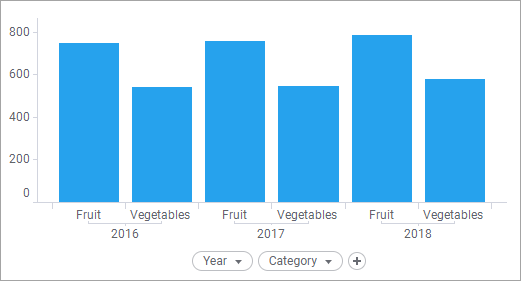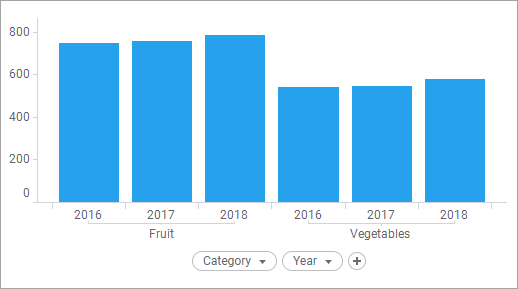
By adding more than one column to an axis selector in the visualization, you can show data in a hierarchical structure. In the example below, the column Year and the column Category have been added to the category axis. The bar chart automatically displays a bar for each combination in the hierarchy –– in this case the sale of fruit and the sale of vegetables per year.

You can change the hierarchy order, if you prefer to see the bars in another way. Drag the Category axis selector and drop it to the left of the Year axis selector.

This causes the bar chart to change the order of the bars. As you can see below, the bars concerning fruit sales are now placed next to each other. Note how the hierarchy displayed in the labels below the bar chart corresponds to the order of the axis selectors.

The order of columns can also be changed in the Visualization Properties dialog, either by drag-and-drop, or, by right-clicking a column selector and selecting Move Up/Move Down or Move Left/Move Right from the pop-up menu.
Instead of displaying the separate hierarchy columns on the axis as shown above, you can define a fixed hierarchy from the axis columns. Then the hierarchy is supplemented with a slider. By dragging the slider you can easily switch between the different levels in the hierarchy. A fixed hierarchy is represented in the Data in analysis flyout and Filters panel, and it is also associated with a hierarchy filter. For more information, see What is a Hierarchy Filter?